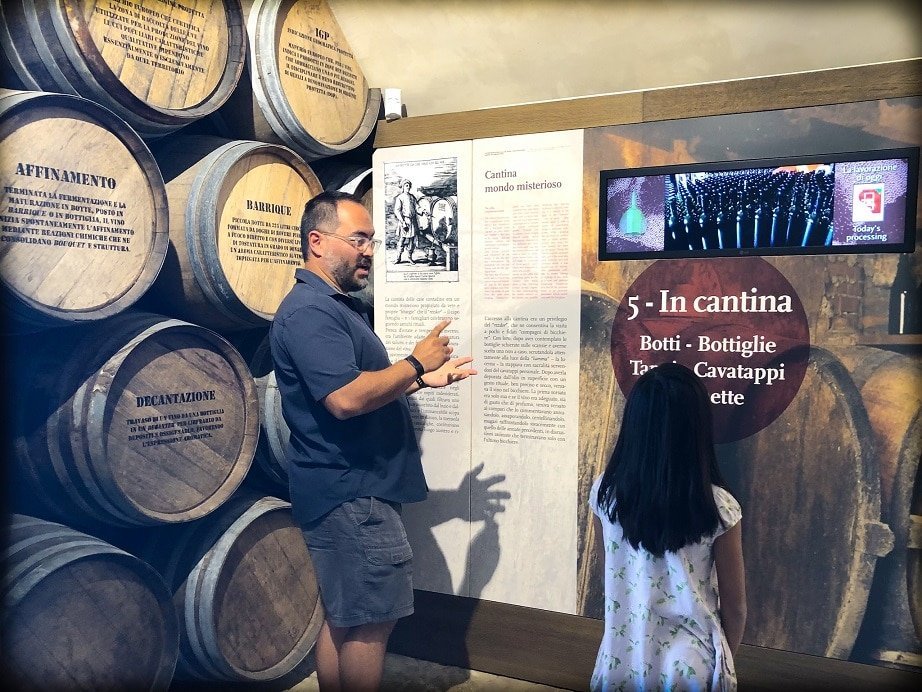Episode 6: How do I create a worldschooling plan?

In this episode of Worldschooling Q&A, Astrid and Clint unpack the question: How can I create a worldschooling plan that works for my family?
Worldschooling Q&A – Episode 6
Hosts: Astrid & Clint, creators of The Wandering Daughter
Title: Episode 6: How do I create a worldschooling plan?
Episode summary
Clint and Astrid walk through the importance of knowing your family’s values, learning styles, and rhythms, and how those influence what a successful plan looks like. From being honest about your downtime needs to letting go of unrealistic teaching expectations, they offer real-world strategies for crafting a flexible, sustainable plan that evolves with you.
You’ll also hear examples from their own journey, like the value of “chill out” days, adjusting for different parenting styles, and how they structured their global route to ease into jet lag.
Building a worldschooling plan that fits your family
Creating a worldschooling plan doesn’t mean locking yourself into a strict schedule. Instead, it’s about designing a flexible framework that honors your family’s values, learning styles, and pace. These steps can help you craft a plan that grows with you as you learn from the world together.
Start with your family values
The foundation of any worldschooling plan begins with knowing what matters most to your family. Take time to talk about your shared values, whether it’s curiosity, connection, respect, creativity, or all of the above. Then determine how you want those values to guide your travels and learning experiences. When everyone contributes, kids feel more invested in the journey, and parents can use those values as a compass when making decisions.
Build down time into your worldschooling plan
A strong worldschooling plan leaves room for rest as well as exploration. During our stay in Puerto Escondido, Mexico, we learned this firsthand. The beach was just a kilometer away, but what we needed most was a quiet day in our apartment. Building “chill-out days” into your plan helps prevent burnout and gives your family space to reflect on what you’ve learned.
Keep it flexible from the start
Your worldschooling plan will evolve as you go. What feels right in the first few weeks might not fit by month two. Be open to adjusting your pace, shifting your routines, or even rethinking your learning approach. Flexibility keeps your plan sustainable, especially when travel logistics, moods, or interests change.
Designing your learning approach
Once you’ve identified your family’s rhythm and priorities, the next step in your worldschooling plan is shaping how learning actually happens.

Every child (and every parent!) learns differently, so the best approach is one that fits everyone’s needs.
Adapt your worldschooling plan to different learning styles
Think about how your child absorbs information best. Do they learn through hands-on activities, storytelling, or visuals? A worldschooling plan for a tactile learner might include cooking classes, nature hikes, or art projects inspired by local traditions. For a more reflective learner, quiet reading or journaling can turn each experience into a lasting lesson.
Include everyone’s learning preferences
Worldschooling isn’t just for kids. Parents are learners too. A good worldschooling plan recognizes that everyone in the family has something to experience and gain. You might enjoy historical walking tours while your kids prefer science museums or outdoor adventures. By mixing learning opportunities that appeal to everyone, you create a balanced plan that keeps curiosity alive for the whole family.
Choose the right mix of structure and freedom
Some families thrive with a structured approach, using curriculum or online classes as part of their worldschooling plan. Others prefer a free-flowing, experience-based model. There’s no single right way to do it. What matters is finding the balance that aligns with your comfort level and your children’s needs. If teaching your child directly feels challenging, try using online resources or community workshops instead of doing everything yourself.
Adapting your worldschooling plan
No worldschooling plan stays the same forever. The beauty of this lifestyle is how it invites constant reflection and growth.

As your family learns and travels, your plan should evolve to match your changing goals, energy levels, and interests.
Revisit your goals and values regularly
Set aside time every few months to check in as a family. What’s working well? What feels off balance? A good worldschooling plan adapts to your current reality rather than forcing you to stick to an old idea. These conversations can bring out new insights. For example, it might help you realize that you prefer slower travel or that your kids are ready for more independence.
Adjust for different ages and stages
The ideal worldschooling plan for a seven-year-old will look different from one for a teenager. Younger kids may need more hands-on projects and shorter excursions, while older kids might want more say in choosing destinations or subjects. Allowing your plan to grow with your children helps them take ownership of their education and see learning as a lifelong adventure.
Stay grounded in your why
As you fine-tune your worldschooling plan, come back to your “why.” Are you hoping to deepen family connection? To help your kids become responsible global citizens? Keeping that purpose front and center gives your decisions clarity. It reminds you that your worldschooling plan isn’t about checking boxes. Instead, it’s about creating meaningful, memorable experiences that shape who your family becomes together.
Submit your worldschooling questions here!
Key topics covered
Start with values
- Identify what matters to your family before making a plan—do you value routine or spontaneity, downtime or activity?
Honor everyone’s needs
- Kids and adults alike need to feel heard. Flexibility, emotional safety, and rest days are part of a good plan.
Learning styles matter
- Plan around how your child learns—and how you teach. Some families love museums; others thrive with unstructured play.
You don’t have to be the teacher
- Bring in local guides, tutors, and cultural experiences to take the pressure off you.
Your plan will evolve
- Start small and iterate. Be open to scrapping what doesn't work. Returning home doesn't mean failure.

Chapters
00:00:00 – Introduction
00:00:54 – Today’s question: How can I create a worldschooling plan that works for my family?
00:01:11 – Why creating your own plan matters
00:01:39 – Start with family values and what everyone needs
00:02:10 – Making space for everyone’s input and different needs
00:02:39 – Understanding how budget and activity levels align with your values
00:03:36 – How Astrid and Clint balance activity and downtime
00:04:23 – “Chill out” days and why they matter
00:04:45 – Parenting styles on the road: autonomy vs. togetherness
00:05:34 – Considering your child’s learning style
00:06:35 – Adapting to how both adults and kids learn best
00:07:06 – Why parents may need to rethink their role as teacher
00:08:02 – Outsourcing teaching: tutors, guides, and classes
00:08:19 – Be open to iteration: your plan will change
00:09:07 – Your plan in week 2 will look different than day 1
00:09:36 – Being flexible is key to worldschooling success
00:10:05 – Leaning into resources: Astrid’s website and local options
00:10:46 – Lazy homeschooling: using tours and activities as lessons
00:11:16 – Take a tiered approach: home to short trips to global travel
00:11:46 – Gradual time zone transitions and other route strategies
00:12:31 – It’s okay to pause or return home—this isn’t failure
00:13:13 – Outro and how to connect with Astrid & Clint
Further worldschooling resources
- 45 valuable worldschooling resources for families
- 11 helpful tips for becoming a worldschooling family
- What is worldschooling? Top 15 essential facts for families
- 5 easy ways to incorporate worldschooling into your travels
Support the podcast
- Join The Wandering Daughter on Patreon for episode transcripts, extra resources, and live office hours with Astrid and Clint.
- Follow and subscribe on Spotify, Apple Podcasts, and YouTube.
- Leave a five-star review to help others discover the podcast.
- Submit your worldschooling questions to our podcast page.





